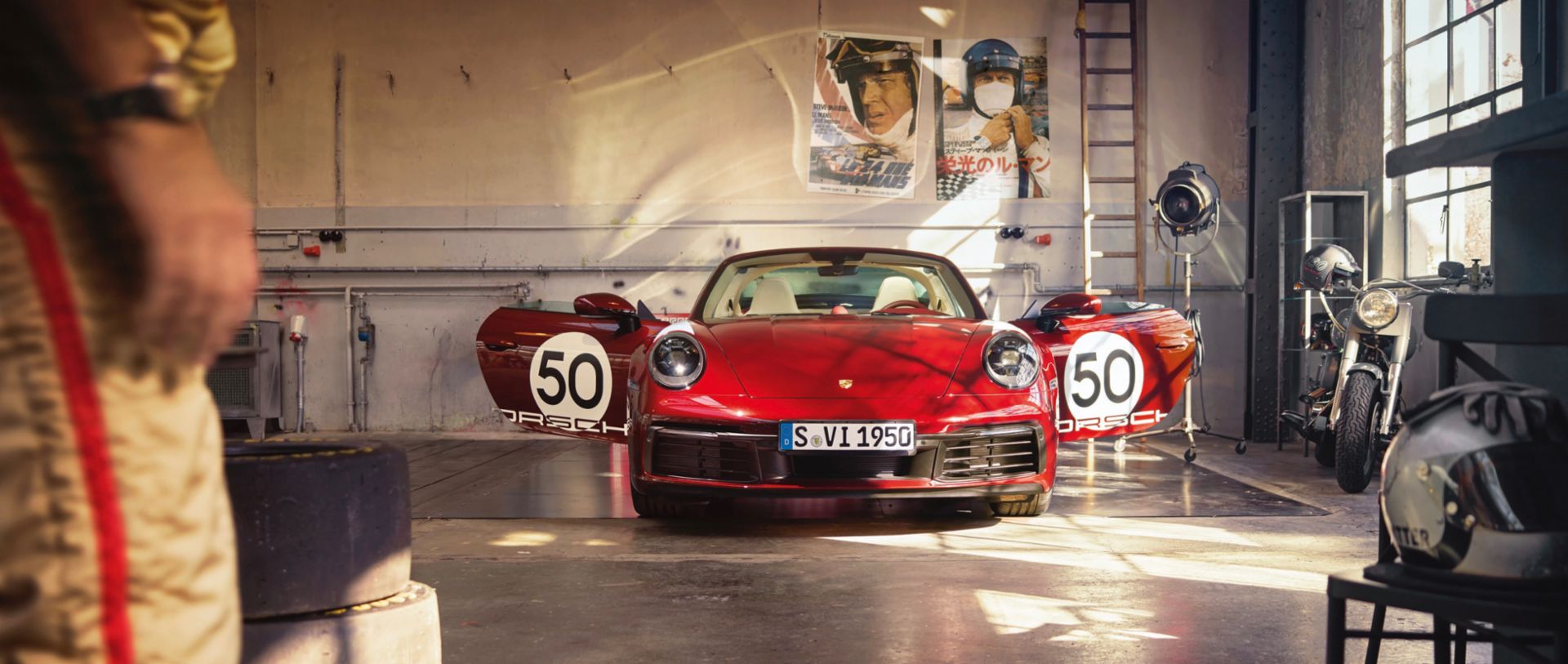A Leap in Time
Scene 1
Fifty years ago, Steve McQueen began shooting his movie epic Le Mans—the most famous film sequence featuring a 911. Today, the new Porsche 911 Targa 4S Heritage Design Edition would be perfectly cast for the role.
With props from the collection of Frank Wrobel.
Porsche 911 Targa 4S (PDK)
Fuel consumption city: 13.3 l/100 km
Highway: 8.0 l/100 km
Combined: 9.9 l/100 km
CO2 emissions combined: 227 g/km (as of 06/2020)
The technical data mentioned in this issue may vary from country to country.
& Action
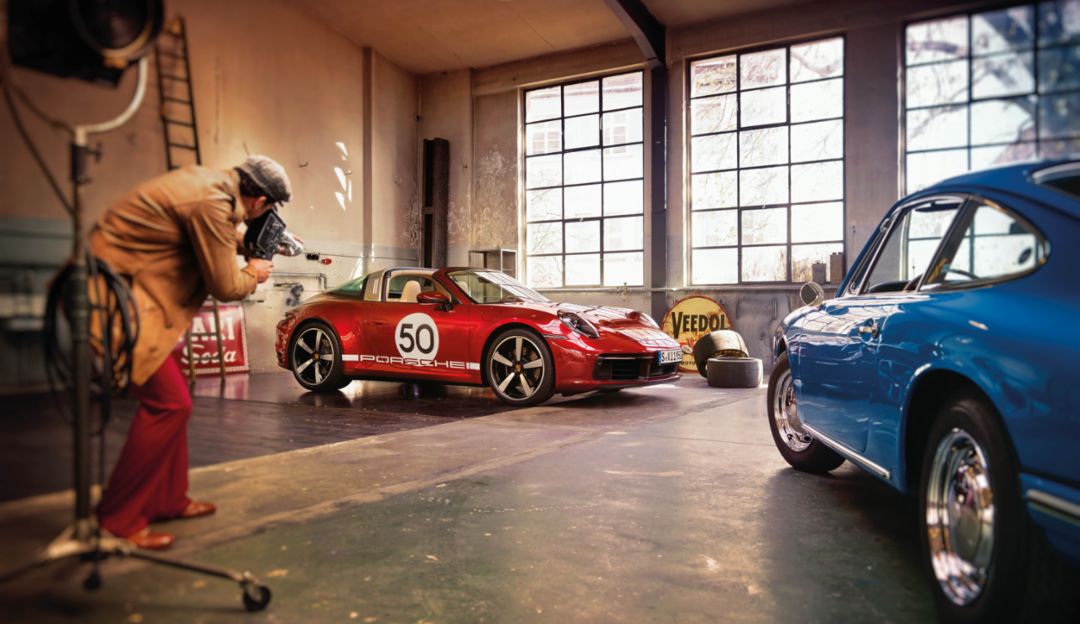
Scene 2
No words: McQueen relies on the power of images when it comes to the film character Michael Delaney. The first half hour of the film gets by without dialogue, as Delaney arrives in Le Mans in his Porsche 911 S. The car is the star of this legendary intro. At the 2020 photo shoot in the style of the McQueen years, the new Porsche 911 Targa 4S Heritage Design Edition takes center stage. With 331 kW (450 hp, Porsche 911 Targa 4S (PDK): Fuel consumption city: 13.3 l/100 km, highway: 8.0 l/100 km, combined: 9.9 l/100 km, CO₂ emissions combined: 227 g/km), this special model offers two and a half times as much power as the 1970 film original. The “Christophorus” backdrop is modeled on the renowned Porsche workshop in Teloché near the French racetrack—the team’s Le Mans base until the 1980s.“As far as he was concerned, Porsche was the best car in the world.” Costar Siegfried Rauch on Steve McQueen

“His love of racing was infectious.” Chad McQueen on his father Steve McQueen

Scene 3
Original props: in “Le Mans”, the German Johann Ritter is one of McQueen’s rivals. Ritter’s helmet from the shoot fifty years ago is now to be found on the cherry metallic paintwork of the new Targa 4S. While a first-generation 911 enlivens the scene in the background, the latest 911 interpretation presents its tail end, featuring a continuous strip of lights and four silver sport tailpipes. Trunk lid grilles in glossy black and decorative elements illuminated in white are the calling card of the Heritage Design Edition, which has been limited to 992 vehicles.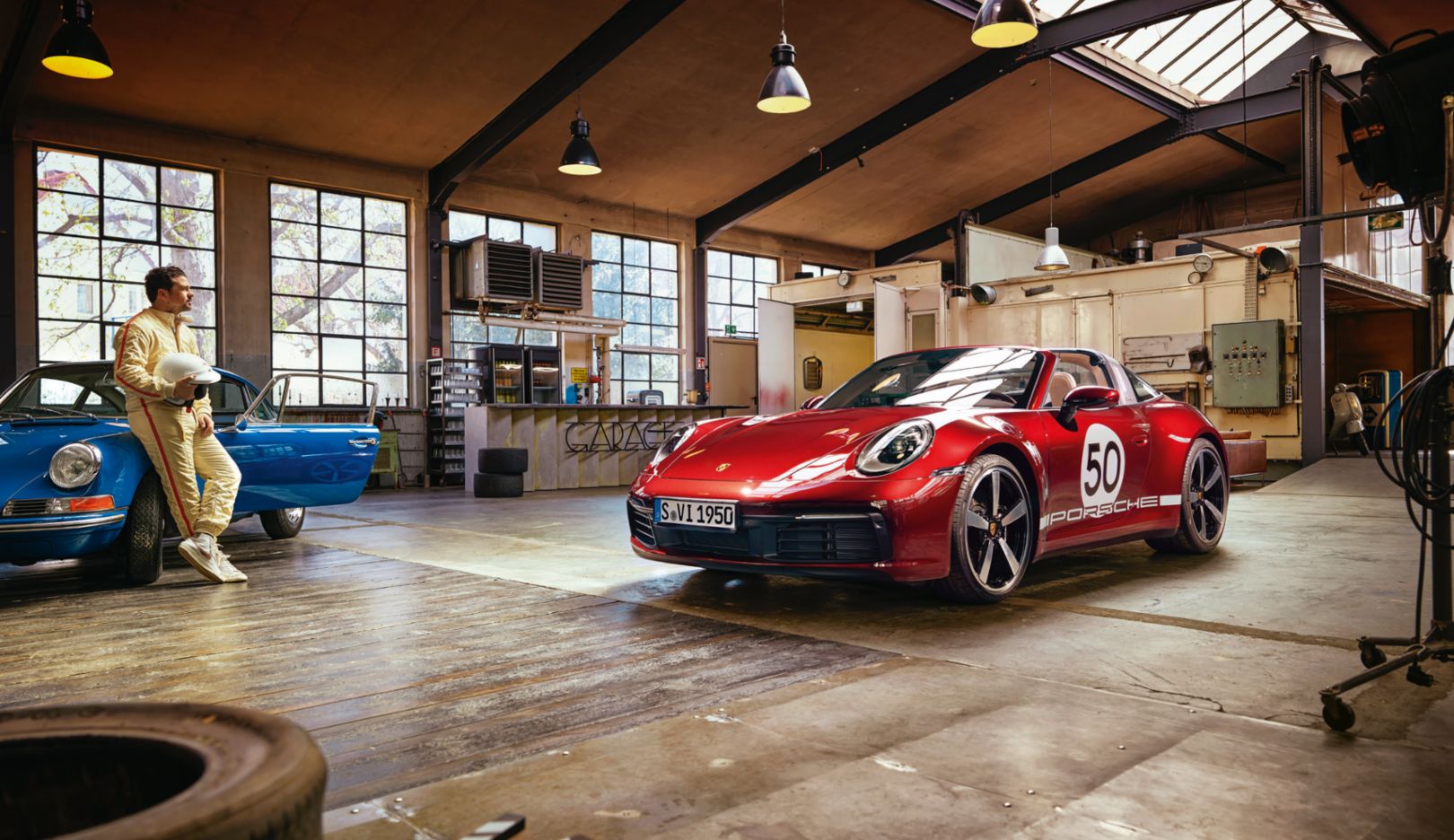
Scene 4
Authentic fiction: “Le Mans” is made particularly fascinating by its numerous film shots from the real twenty-four-hour race of 1970, which are seamlessly interwoven with the storyline. The race car from McQueen’s film company, Solar Productions—a Porsche 908/02 Spyder—drove along as a camera car and exposed kilometers of footage of real racing scenes. The Porsche 911 Targa 4S Heritage Design Edition is a loving nod to Porsche history, with gold-colored lettering on the Targa bar and the rear. The unique interior features club leather and corduroy in Atacame Beige. The instrument cluster and Sport Chrono stopwatch provide further nostalgic reminiscences in the cockpit.
Scene 5
Final: the race is over. A short look back at the guest star in the studio—a first-generation Porsche 911 Coupé. The garage door then opens and releases the new 911 Targa 4S Heritage Design Edition onto the asphalt of the road, where it will write its own story.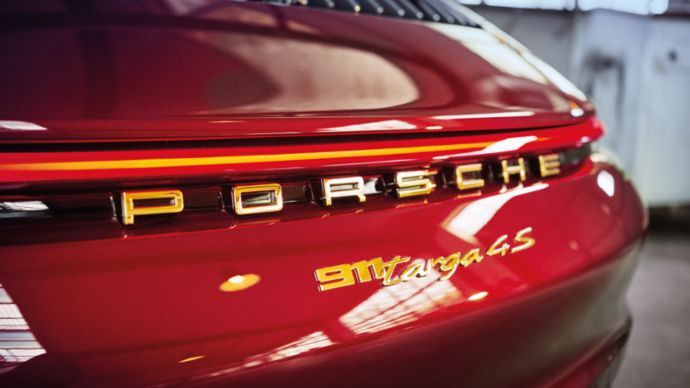
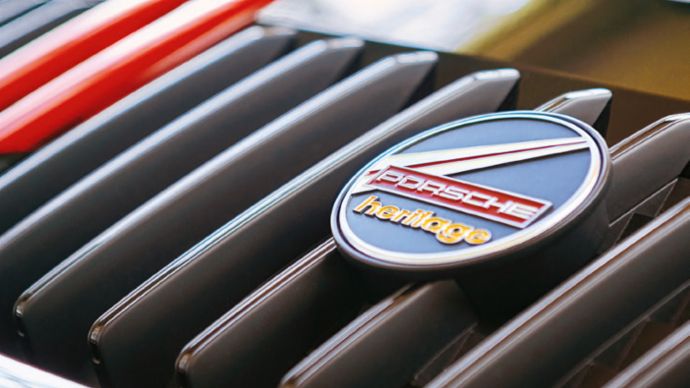
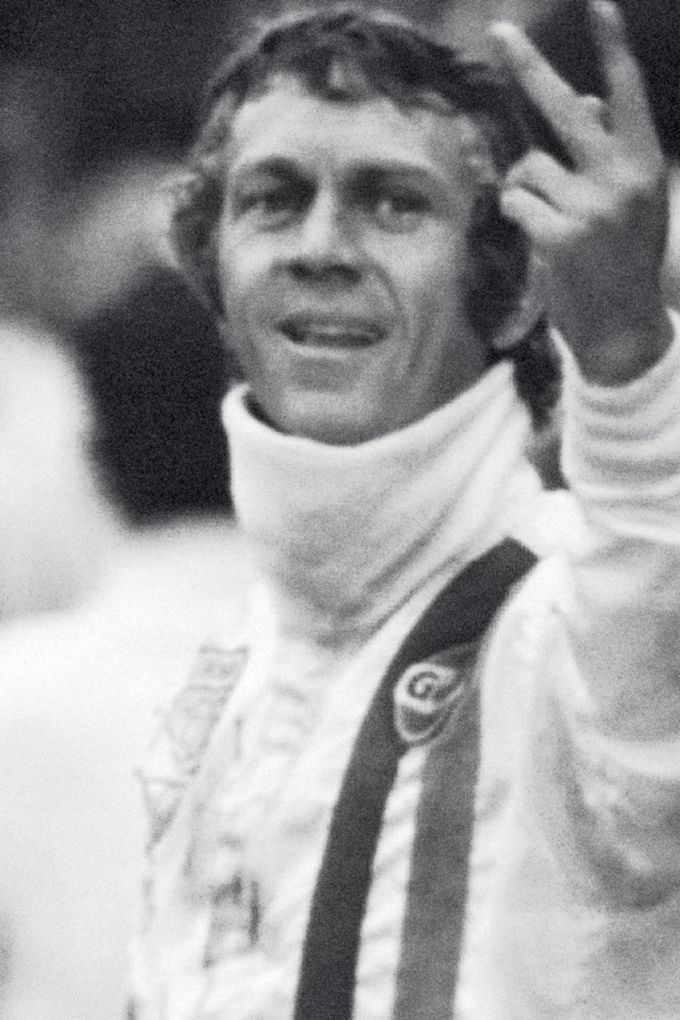
SideKICK:
Le Mans: no words
With Le Mans, Steve McQueen realized his very own idea of a film about race-car drivers: actions, gestures, and looks count for more than words. In the very last scene, when rivals Erich Stahler (Siegfried Rauch) and Michael Delaney (Steve McQueen) cross the finish line in the midst of a roaring crowd—neither victorious, yet both full of respect for each other—a gesture with just two fingers is enough to say it all. Really great cinema can be so ingeniously simple. The movie premiered in 1971 in Indianapolis, where McQueen had grown up. Le Mans was not a box-office success, however. It was too experimental for its time but became a cult classic and blueprint for all racing movies that followed.
For additional information ...
... on the Porsche 911 Targa 4S Heritage Design Edition, visit 9:11 Magazine at 911-magazine.porsche.com.
